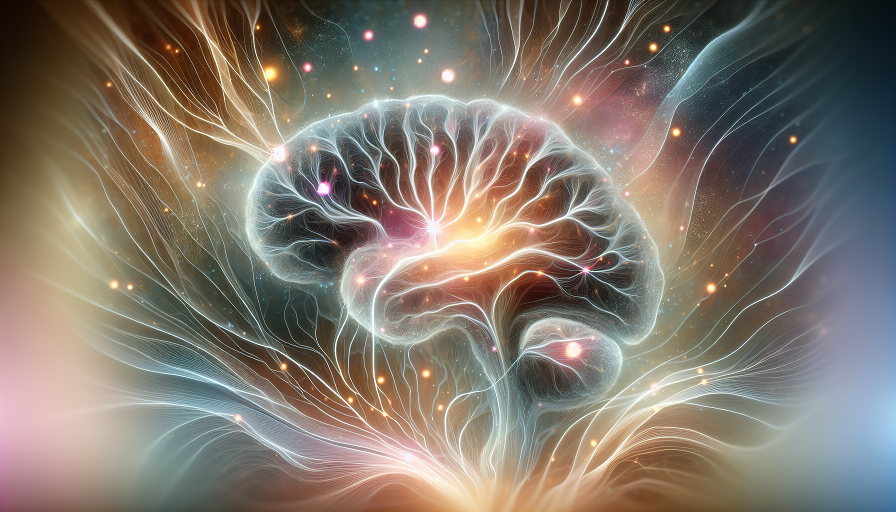
You’re reading a sentence and suddenly realize you’ve lost the last few words. Your eyes were open. You weren’t asleep. But your brain… briefly checked out. That’s a microsleep—a tiny neurological blink. And while it might feel like a bug in the system, it’s actually a built-in feature.
Our brains aren’t designed to run nonstop. Just as our eyes blink to keep vision clear, the brain has its own “mental blinks”—short, involuntary lapses that help restore function. Whether it’s a microsleep, a brief zoning out, or a mental “reset,” these moments help us stay sharp, even if we’re not consciously aware of them.
Contents
What Are Microsleeps?
Microsleeps are short episodes of sleep-like brain activity lasting between 1 to 15 seconds. They can occur with your eyes open, and you might not even realize it happened—until you miss part of a conversation or make a small mistake in what you’re doing.
Common Signs of a Microsleep:
- Blank staring or a “zoned out” look
- Failure to respond to external stimuli
- Sudden head nods or drooping eyelids
- Loss of memory for just a few seconds
They’re especially common in sleep-deprived individuals or during repetitive, low-stimulation tasks—like driving on a highway, reading a textbook, or sitting through a long meeting.
The Brain During a Microsleep
During a microsleep, parts of the brain temporarily shift into a sleep-like state even while the rest of the brain remains “awake.” In neuroimaging studies, regions like the thalamus and frontal cortex show reduced activity or brief bursts of slow-wave patterns similar to non-REM sleep.
This isn’t total unconsciousness—it’s a targeted, partial shutdown. You can think of it like your brain flipping the “maintenance” switch in specific circuits, just long enough to restore function without requiring a full nap.
Why Microsleeps Happen
Microsleeps typically occur when there’s a mismatch between cognitive demand and available mental energy. Common triggers include:
- Sleep deprivation: The brain literally can’t maintain full wakefulness
- Monotony: Boredom and repetition reduce arousal levels
- Mental overload: Prolonged focus can deplete attentional resources
- Circadian rhythms: Natural energy dips, especially mid-afternoon
Microsleeps are often the brain’s emergency “reboot”—short enough to avoid full unconsciousness, but effective at clearing short-term overload.
Mini Mental Resets: Not Sleep, but Still Essential
Beyond true microsleeps, your brain also engages in mini mental resets—brief cognitive disengagements that may not involve sleep-like states but still serve a restorative function.
These Might Look Like:
- Staring out a window without really seeing
- Mind-wandering during a break
- Re-reading the same sentence multiple times
- Suddenly realizing your thoughts drifted mid-task
These resets are the brain’s way of clearing mental caches, releasing stuck patterns, and allowing space for new focus to emerge.
Benefits of These Brief “Blips”
Although often viewed as a failure of attention, microsleeps and mental resets actually provide several cognitive benefits:
- Prevent information overload by allowing brief rest
- Help consolidate short-term memory
- Improve alertness after recovery
- Support error correction—many people regain focus quickly and more accurately post-reset
In one study, people who experienced brief mental lapses during repetitive tasks were more accurate in subsequent responses, suggesting the lapse allowed them to recalibrate.
When Microsleeps Become a Warning Sign
While short lapses are normal and sometimes beneficial, frequent or unintentional microsleeps—especially during important activities—may signal a larger issue:
- Chronic sleep deprivation
- Sleep apnea or other sleep disorders
- Excessive daytime sleepiness (EDS)
In high-stakes environments—like driving, flying, or operating machinery—microsleeps can pose real danger. If you find yourself zoning out often during these tasks, it’s time to reassess your sleep and stress levels.
How to Support Your Brain’s Natural Reset Cycles
Rather than trying to eliminate all signs of mental drifting, you can work with your brain’s rhythms to stay sharper, longer.
Tips to Optimize Mental Recovery:
- Use the 90-minute rule: Work in cycles with intentional breaks every 60–90 minutes
- Take visual and sensory breaks: Look away from screens, stretch, or step outside
- Get high-quality sleep: Nothing replaces true rest for preventing daytime lapses
- Practice mindfulness: Helps catch drifting attention earlier and reset faster
These strategies help reduce the need for emergency microsleeps by giving your brain regular opportunities to recharge.
Can Nootropics Help with Mental Energy and Focus Resilience?
Certain nootropics may support the cognitive systems involved in attention, energy regulation, and mental stamina—helping you reduce the frequency or impact of unintentional mental lapses.
Nootropics That May Help:
- Citicoline: Supports mental clarity and sustained attention
- Rhodiola Rosea: Enhances energy under cognitive fatigue and reduces burnout
- L-Theanine: Helps maintain calm focus without jittery stimulation
- Panax Ginseng: May improve alertness and working memory during low-energy states
These can be especially helpful during extended focus periods—but they work best in tandem with good sleep and regular breaks.
Your neurons may not literally blink—but your brain absolutely does. And like blinking, these tiny mental moments serve a purpose: rest, recalibration, and readiness. In a culture obsessed with staying “on,” the smartest thing your brain does might be knowing exactly when to turn off—if only for a few seconds.
So the next time your thoughts drift or your brain seems to pause, don’t panic. You might just be in the middle of a neurological exhale. And when it’s done, your mind will be ready to click back in—clearer, sharper, and better prepared to keep going.

